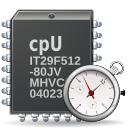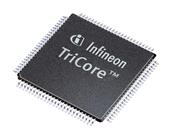

For modern processors of high complexity (many of them are multi-core), it is very difficult to perform a formal model of the pipeline, cache and crosstalk mechanisms between cores.
In this case, it is not possible to calculate the WCET by static code analysis alone and it is necessary to use mixed techniques of analysis and runtime measurement.
TimeWeaver is a hybrid analyzer that combines these two WCET calculation techniques. The most accurate execution time measurements are obtained by capturing non-intrusive hardware traces from the microprocessor. Therefore, TimeWeaver is only available for processors with hardware trace capability and for boards with Nexus-type trace connector and Aurora or similar type interface. Additionally, a debug probe with hardware trace capability such as Lauterbach or Green Hills Probe is required.
The result of the analysis is similar to that obtained by aiT and it's accurate enough to be considered as evidence of certification.
PowerPC capable of outputting Nexus program trace messages (IEEE-ISTO 5001, class 2 or higher):
ARM with clock-cycle accurate ETM trace or ULink Pro
Tricore traces



© 2014 - 2025 Doymus Software & Engineering - Legal Notice - Privacy Policy - Cookie Policy - Image Source
© 2025 Doymus Software e Ingeniería - Legal Notice - Privacy Policy - Cookie Policy
| Cookie | Duration | Description |
|---|---|---|
| cookielawinfo-checkbox-analytics | 11 months | This cookie is set by GDPR Cookie Consent plugin. The cookie is used to store the user consent for the cookies in the category "Analytics". |
| cookielawinfo-checkbox-functional | 11 months | The cookie is set by GDPR cookie consent to record the user consent for the cookies in the category "Functional". |
| cookielawinfo-checkbox-necessary | 11 months | This cookie is set by GDPR Cookie Consent plugin. The cookies is used to store the user consent for the cookies in the category "Necessary". |
| cookielawinfo-checkbox-others | 11 months | This cookie is set by GDPR Cookie Consent plugin. The cookie is used to store the user consent for the cookies in the category "Other. |
| cookielawinfo-checkbox-performance | 11 months | This cookie is set by GDPR Cookie Consent plugin. The cookie is used to store the user consent for the cookies in the category "Performance". |
| viewed_cookie_policy | 11 months | The cookie is set by the GDPR Cookie Consent plugin and is used to store whether or not user has consented to the use of cookies. It does not store any personal data. |
